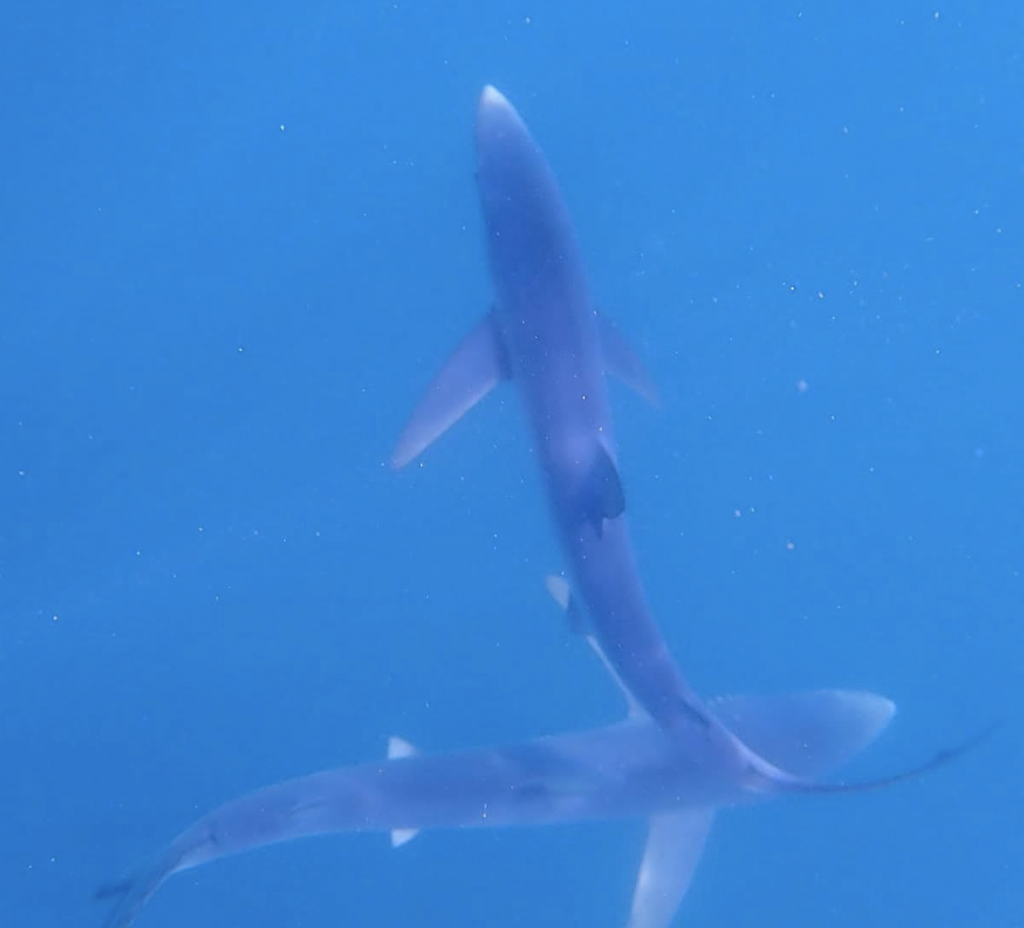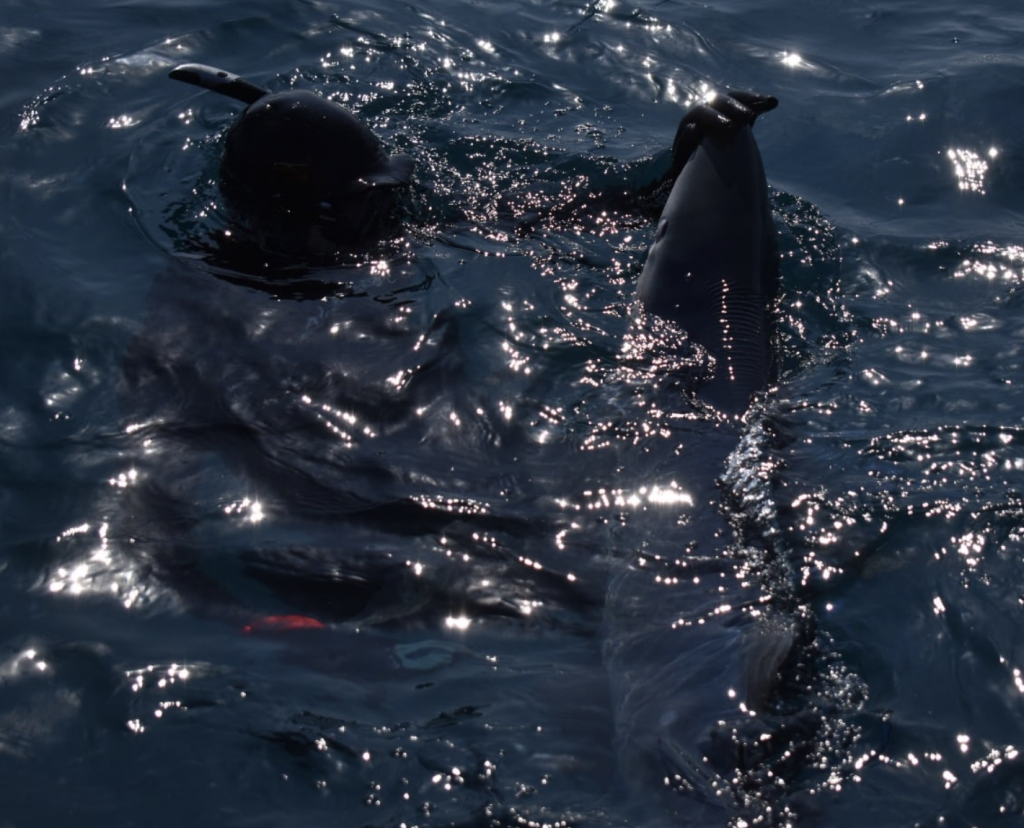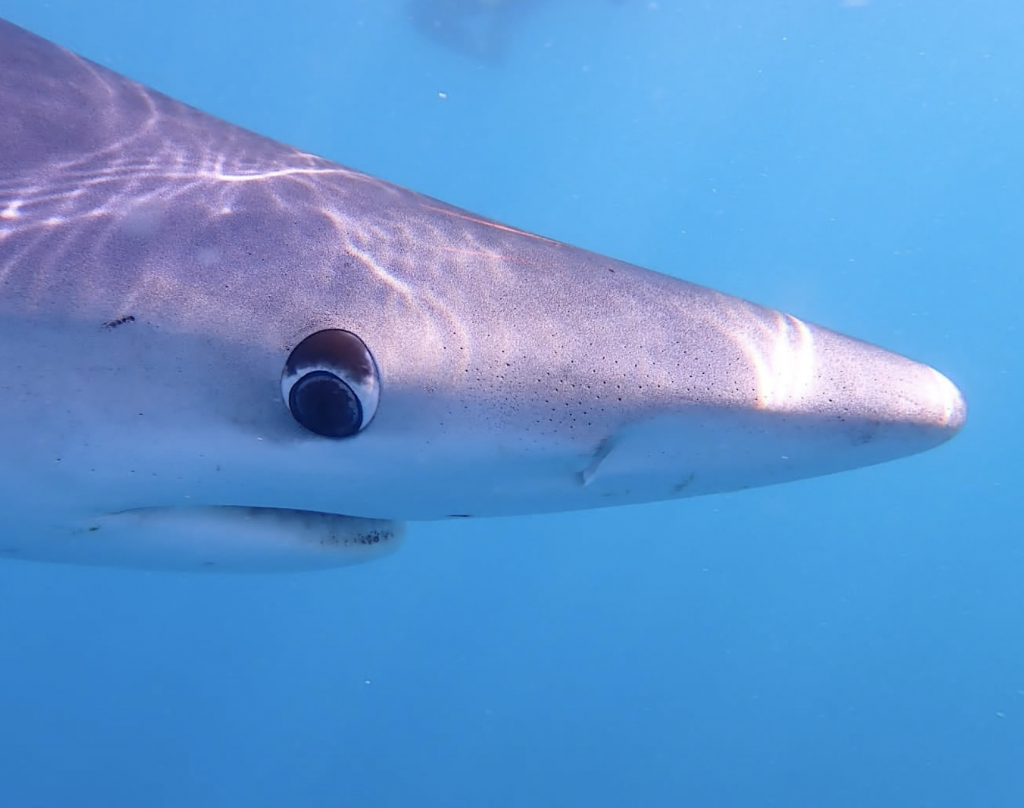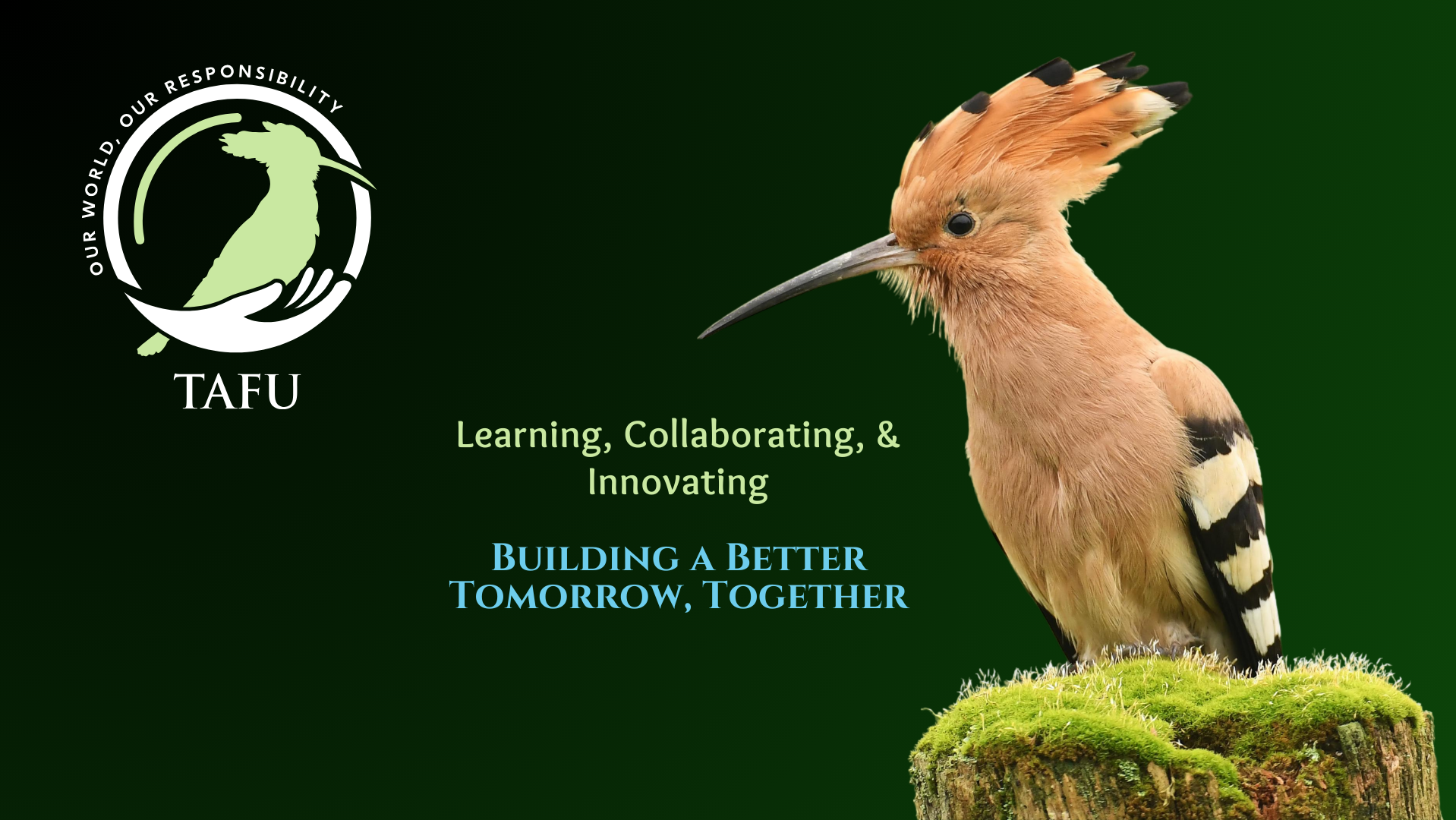My brother Ivan SUnderwood (marine biologist) with his colleagues with https://web.facebook.com/BlueSharkSnorkelTrips?_rdc=1&_rdr went to visit Blue sharks just of the coast of Cornwall, they had such a great time, and Ivan even got bitten by a shark. Below is his lovely story! *any interaction with wild animals depicted was on their terms. never approach sharks irresponsibly for your sake and theirs. Always stay responsible* Penzance on a beautiful flat morning aboard the Celtic Fox. We were headed for the open ocean. On our voyage passed a bottling grey seal just bobbing up and down upright in the water. It is thought that they can ‘sleep’ (resting half of their brain at a time) in this position. Then we intercepted a juvenile basking shark filtering microscopic plankton through its gills. These grow up to be the 2nd largest fish in the world. Our target species, however, was one of its carnivorous cousins: the blue shark (Prionace glauca). At 20 miles out and a depth of around 90m the engine had been switched off and a frozen block of chum (a lovely smoothie of fish bits) was suspended off the boat at the surface of the water. The fish oils glistened as they spread over the shimmering sea surface. Blues like most sharks have an incredibly keen sense of smell allowing them to pinpoint the source from a tremendous distance. We sat there, drifting for 1.5 hours without seeing a fin or hearing a *dun dun..dun dun* . A single tiny Wilson’s storm petrel (about the size of a sparrow) briefly lifted our spirits as it fluttered above the water but I was starting to doubt if we will see any blues at all. “Shark!” – I jumped to the port side to catch a glimpse of a dorsal fin and a magical iridescent blue below the surface. We donned our wetsuits slowly descended into the sea. At first the singular 2m shark was timid. Occasionally i’d see it slowly swim bellow me, with slow, deliberate, almost serpentine undulations of the whole body. After a few drive-bys, I decided to take the plunge and dive down. A large eye acknowledged my presence, but she made no adjustments to her course and allowed me to get close. I swam alongside her for 40-50 seconds admiring the brilliant blue of her skin and the flaring of her gills before I had to come up for air. These sharks are built for speed reaching top speeds of around 70 kph. Their fusiform bodies resemble torpedoes, and their long triangular pectoral fins provide stability and steering. The countershading colouration (blue above and white below) means they blend into the background when viewed from above and below. In a few minutes, we saw more and more sharks. Two….three…six! .. A dozen sharks ascended from the depths and in these numbers gained a lot more confidence. A 2.7-meter shark with a distinct red scar on her head which I’ve named “Red” took interest in my camera and suddenly approached me to see if it or my hand was good to eat. Shark’s snouts/ rostrums are dotted with tiny electro-sensitive ampullae of Lorenzini which pick up the small electrical impulses caused emitted from the muscles of their prey species. The camera being powered by a battery naturally became of interest. As the sharks became more and more inquisitive, like bright blue 3m long ocean puppies, we began to recognise individuals. In addition to Red, there was “Boxer” with a scar behind her left eye, and “Notch”- a large female with 3 distinct notches on her dorsal fin and “4-footer”- the only male we observed. After what felt like an hour but was in fact three. We clambered aboard the Celtic fox one by one. But just as I approached the ladder Red swam towards me. I outstretched my arm in an attempt to redirect her. As she made contact with my hand, she pushed against it and swam over my shoulder, then circled back. This time I rubbed the underside of her snout as she pushed into my hand. Her eyes rolled back. Its known sharks do this when hunting to protect their eyes but I like to think she just liked a good nose rub as she came back for the third time!



Ivan S. Underwood
